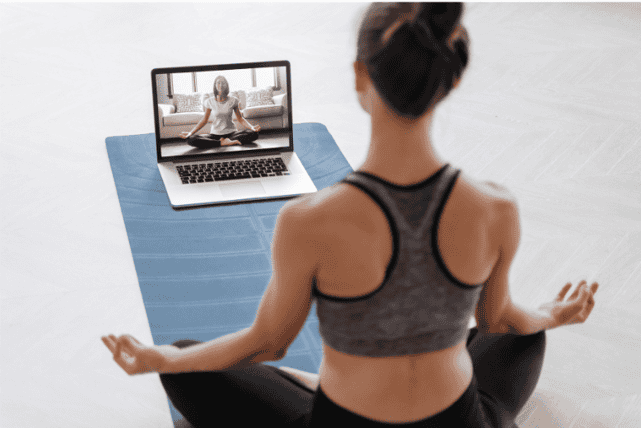Virtual fitness classes have surged in popularity in recent years, offering a convenient and accessible way for individuals to stay active. These classes are typically led by an instructor via live video streams or pre-recorded sessions, allowing participants to workout from the comfort of their own homes.
Pros of Virtual Fitness Classes:
- Convenience: Participants can workout on their own schedule from anywhere with an internet connection. Virtual classes eliminate the need to commute to a gym, making it easier to fit workouts into busy schedules. Many platforms offer both live and pre-recorded sessions, enabling users to pause, rewind, or repeat workouts as needed, allowing them to progress at their own pace.
- Affordability: Virtual fitness classes are often more cost-effective than traditional gym memberships. Many platforms offer affordable subscription plans, making professional training accessible to a wider group of people. Additionally, eliminating the costs of gym memberships and transportation make working out at home a budget friendly audience.
- Comfort and Privacy: Some individuals may feel self-conscious working out in a public gym setting. Virtual classes provide a private, judgement-free environment, which can be particularly beneficial for beginners or those with specific fitness goals who prefer a more personal experience. Additionally, working out at home eliminates concerns about gym attire or time constraints.
- Variety of Workouts: Virtual fitness programs offer a diverse selection of workout styles, including yoga, pilates, high-intensity interval training (HIIT), dance, barre, and more. This variety allows individuals to explore different fitness routines without being restricted by a gym’s class schedule.
- Inclusivity: Virtual classes cater to people of all fitness levels, abilities, and backgrounds. This inclusivity breaks down barriers to participation and provides a more personalized experience for users.
Cons of Virtual Fitness Classes:
- Lack of In-Person Interaction: One of the main drawbacks of virtual fitness classes is the absence of face-to-face interaction. Many people thrive in group workout settings where they can receive immediate feedback, encouragement, and social motivation. The lack of a communal environment may lead to decreased engagement and accountability.
- Limited Supervision and Guidance: Without a trainer physically present, ensuring proper form and technique can be challenging. This increases the risk of injury, particularly for beginners unfamiliar with correct exercise technique. The absence of real-time supervision may also make it difficult to stay motivated and receive personalized feedback.
- Technology and Connectivity Issues: The quality of virtual workouts can be affected by internet speed and streaming reliability. Unstable internet connections, lagging videos, and poor audio or visual quality can disrupt workouts and create a frustrating experience for participants.
- Lack of Equipment or Space: While some virtual workouts require little to no equipment, others may require weights, resistance bands, or a large workout space – resources that not everyone has in their home. This limitation can reduce the variety and effectiveness of workouts for some individuals.
- Difficulty Staying Motivated: Without in-person instructors and peers to monitor progress, some individuals may struggle to remain committed to their fitness routines. Implementing strategies such as setting realistic goals, selecting enjoyable workouts, and finding an accountability partner can help maintain motivation.
Conclusion:
Virtual fitness classes provide a flexible, cost-effective alternative to traditional gym workouts, making it easier for individuals to incorporate exercise into their daily lives. However, challenges such as maintaining motivation, receiving supervision, and fostering social connections remain obstacles. For those who prioritize convenience and affordability, virtual classes can be an excellent solution, but they may not fully replace the benefits of an in-person workout experience.

